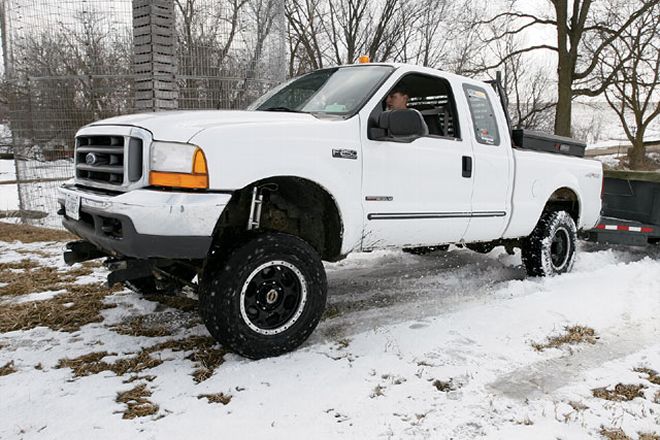
 Ken Brubaker
Senior Editor, Four Wheeler
Ken Brubaker
Senior Editor, Four Wheeler
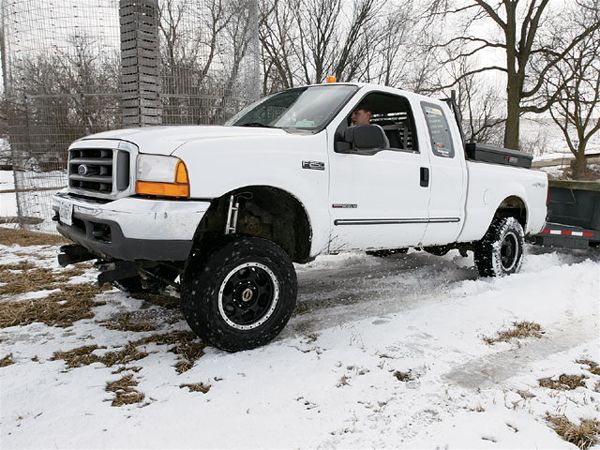
To us, it's unacceptable to improve a vehicle in one area and create a new weak point, or points, in the process. This is especially true when modifying a truck used for work. Fortunately, preplanning and carefully analyzing modifications can ensure that a vehicle is improved without being compromised.
When we recently wanted to upgrade our '99 Super Duty, we had several criteria. In the end, it had to have better ground clearance, approach and departure angles, and it needed to be fortified to handle the rigors of work. We were not willing to trade off towing, hauling, or snowplowing manners. We did not want to have to spend the money to regear the differentials either. Our rig is a workhorse in every sense of the word and it needed to stay that way.
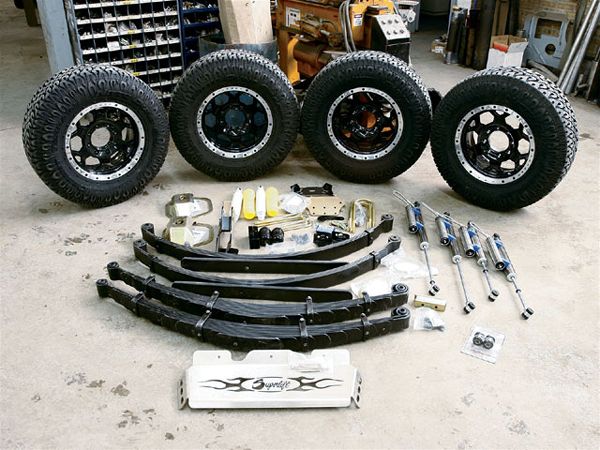
For this reason, we decided to go with a mild 4-inch suspension lift. We chose a Superlift kit, which we knew would give us the results we wanted while retaining the ride and handling. Since the roads are pretty crappy where this truck is based, we wanted a heavy-duty set of shocks that could handle sustained abuse. Superlift offers some really good shocks, but we opted for a set of remote-reservoir Bilstein 7100 Series shocks because of their legendary reputation and the fact that they recently received a couple of noteworthy upgrades. For wheels, we chose a set of quality black Weld Method wheels. They look good without being blingy and they're easy-to-clean, lightweight, and strong. Nitto Dune Grapplers got the nod as the tire of choice. They may seem odd on a work truck, but with a 3,750-pound maximum load rating and an all-weather design, they're versatile enough to handle the work we need done. Finally, we installed a Superlift Rock Ring to protect the front axle, and a Superlift Tru Speed to recalibrate the speedometer.
You can read our thoughts on the finished vehicle in the sidebar. For now, follow along as we showcase the highlights of this work truck buildup.
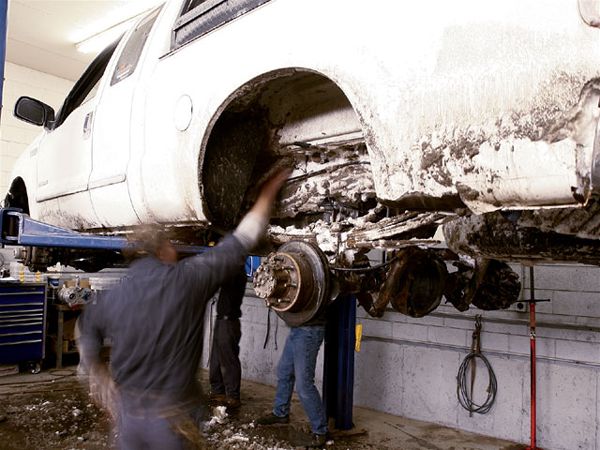
1. Like we said, our Super Duty is a workin' dog. Example: Before the crew at Attitude Performance could even begin the installation of the new parts, they had to chip away weeks of rock-hard snow and ice that had gathered under our never-garaged truck. After that miserable task, we removed the front bumper and snowplow frame so we could access the front suspension. Ford uses a liberal amount of thread lock on the front leaf-spring bolts, but a powerful impact wrench was enough to break them free. Sometimes a torch is needed to heat up the bolts to soften the thread lock so the leaf-spring bolts can be removed.
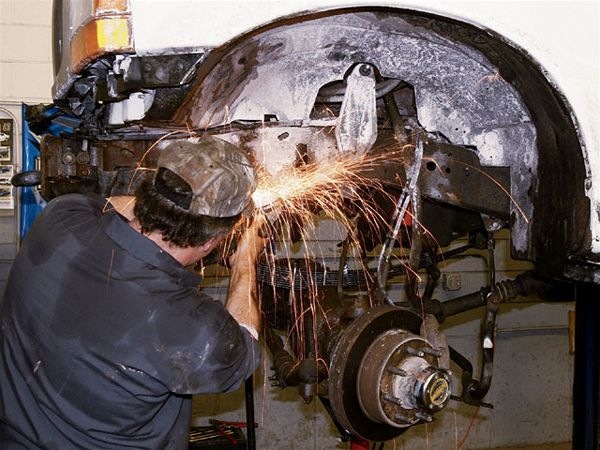
2. The big pain in the neck was getting the stock upper track-bar mount removed from the frame so we could install the new Superlift track-bar bracket. Why? Well, the upper track-bar mount is fastened to the frame using three bolts. Two of the bolts screw into nuts pressed into a thin metal tab located inside the framerail. The front bolt on our rig was rusted to the nut, which caused the bolt to break from the tab. Matt Dinelli of Attitude Performance says that he has found this occurs in about half of the older Super Duty's in the Rust Belt. The solution is to torch off the frozen nut. Worse, the tab is virtually impossible to remove from the framerail (apparently Ford never intended it to be removed), so a small access hole has to be cut in the frame (shown) and the tab has to be weaseled through the new hole.
Ready To Work
It used to be that hanging the snowplow on the front of our Super Duty resulted in a low-hanging front end and really wallowy road manners. Not anymore. The new Superlift leaves keep the front end level (we had to readjust the plow height of course to compensate for the lift), and when combined with the dual steering stabilizers, handling is improved as well. Overall ride quality is slightly stiffer, but it's a small trade-off for the improved handling. The Bilstein 7100 Series remote-reservoir shocks are light years ahead of the twin-tube shocks and further help to improve the ride and handling. They're worth every penny. The Nitto Dune Grappler tires have pulled our rig through a miserable snow-clogged Midwest winter with nary a complaint. Though we have noticed that due to the tread design there is more side-slipping when plowing than we had with the Cooper Discoverers that they replaced. Overall, it turns out that the Dune Grapplers are good for way more than sand dunes.
Let's talk flex, because our Super Duty has plenty of it now. Before the lift, our Super Duty traveled 61.5 inches up a 20-degree RTI ramp. After the lift, it traveled a stunning 81.5 inches up the ramp (see before and after photos). That 20-inch increase is incredible and calculates out to an impressive 568 RTI points.
Overall we're thrilled with how our Super Duty turned out. We improved its on- and off-highway functionality and we didn't have to sacrifice an ounce of work ethic.








 PhotosView Slideshow
PhotosView Slideshow









